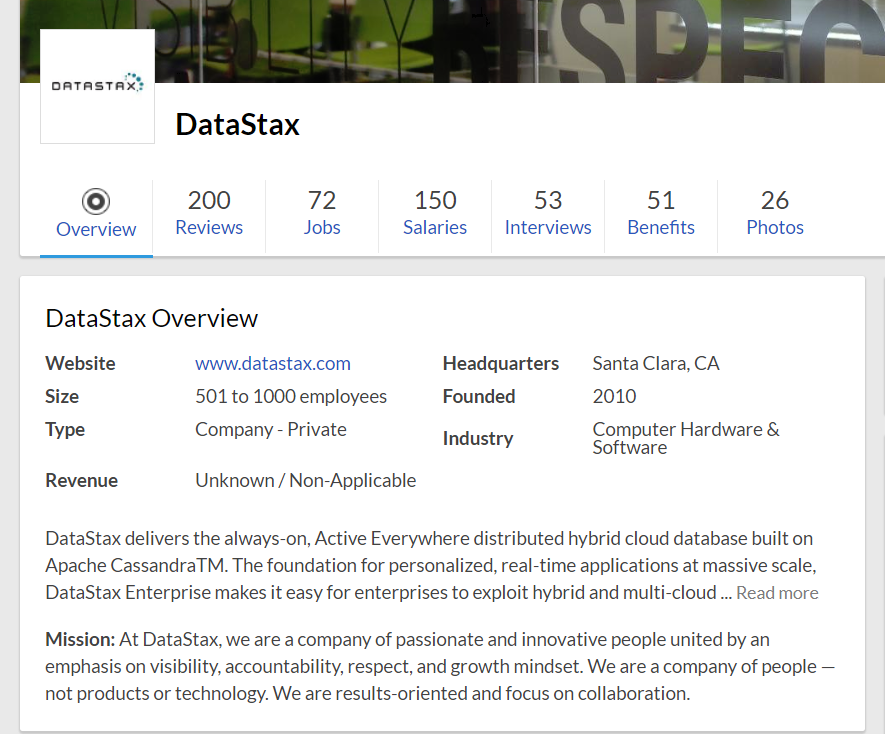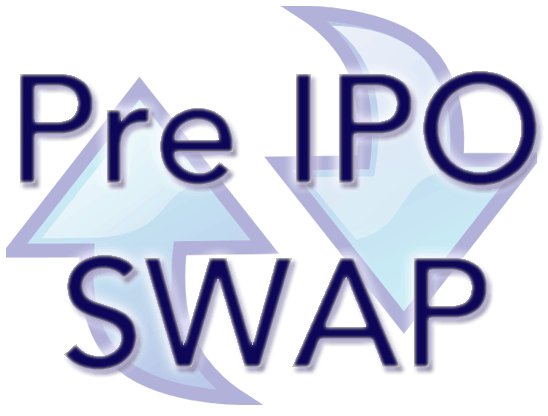PreIPOSwap – (New York, NY) 1/31/2019 — We’ve added Datastax to our research Matrix and posted the data here: https://preiposwap.com/portfolio/datastax/
History of Datastax (from Wikipedia):
DataStax was built on the open source NoSQL database Apache Cassandra. Cassandra was initially developed internally at Facebook to handle large data sets across multiple servers,[5] and was released as an Apache open source project in 2008.[6] In 2010, Jonathan Ellis and Matt Pfeil left Rackspace, where they had worked with Cassandra, to launch Riptano in Austin, Texas.[5][7]Ellis and Pfeil later renamed the company DataStax, and moved its headquarters to Santa Clara, California.[2][8]
The company went on to create its own proprietary version of Cassandra, a NoSQL database called DataStax Enterprise (DSE).[5]Version 1.0, released in October 2011, was the first commercial distribution of the Cassandra database, designed to provide real-time application performance and heavy analytics on the same physical infrastructure.[1][9] It grew to include advanced security controls, graph database models, operational analytics and advanced search capabilities.[10] In September 2014, DataStax raised $106 million in a Series E funding round, raising the total investment in the company to $190 million.[2]In April 2016, the company announced the release of DataStax Enterprise Graph, adding graph data model functionality to DSE.[11]
In March 2017, DataStax announced the release of its DSE platform 5.1, which included improved search capabilities, improved security control, improvements to its Graph data management and improvements to operational analytics performance. DataStax also announced a shift in strategy, with an added focus on customer experience applications. Rather than a new set of technologies, the company started to offer advice on best practice to users of its core DSE platform.[12][10]
In April 2018, DataStax released DSE 6, with the new version focused on businesses using a hybrid cloud computing model, with all the benefits of a distributed cloud database on any public cloud or on-premise, twice the responsiveness and ability to handle twice the throughput.[13][14]
More data from PreIPOSwap Research Team
When researching any company it’s always a good idea to check Glassdoor, as employees can shed an inside light on what’s going on. See Datastax on Glassdoor:

White Paper Title: DataStax Enterprise
Description: Successful businesses recognize the value of capturing the massive volume of daily customer interactions – from purchased transactions to what products customers looked at – and analyzing that data to discover insights about their customers that help make smart business decisions. Achieving success in this area requires two similar yet distinct types of technology: a real-time database infrastructure that supports the operational data needs of the business, and an analytical framework capable of handling the massively parallel analysis of that data.
The real-time side of modern data management has experienced a shift in direction over the past few years. Traditional RDBMS technologies have not been able to keep up with the explosive growth of new data types requiring millisecond-time performance access on a scale that involves both large numbers of concurrent users and high data volumes. Whether the application is serving high-volume web session and user data, reacting to a high-speed financial market feed, aggregating distributed sensor grid events, processing social network messages and connections, or providing real-time intelligence and entity classification, it all comes down to being able to process, store, and respond to large data volumes as fast as possible.
Once such real-time data is stored, it is only natural for decision makers to use it for analysis purposes. However, challenges such as mixed workload management (for instance, separating real-time and analytic operations on the same data), a distributed business and workforce, and the need to store and process extremely large sets of data have stymied even the best of IT professionals who try to use legacy RDBMS software to squeeze the proverbial square peg into the round hole.
This paper examines these and other key data management challenges facing modern businesses. It also explains how DataStax Enterprise provides the first post-relational database solution that handles both real-time and analytic data in a way that solves these problems without the major compromises and costs associated with using RDBMS solutions.
WhitePaper-DataStax-Top-5-Requirements-Online-Applications
Want to know more about Datastax? Contact us.
SIGN UP
